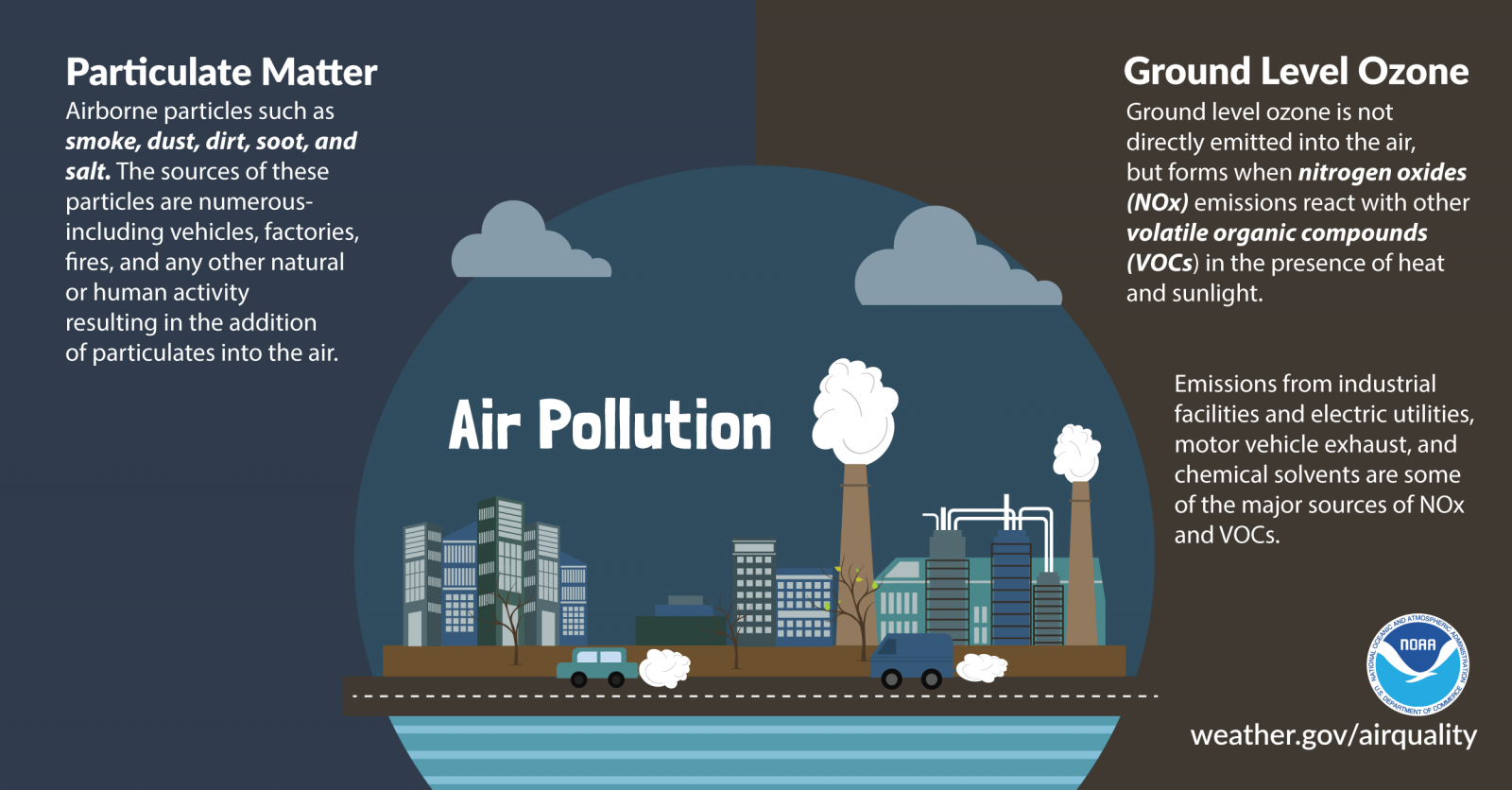Please help the National Weather Service spread these important safety messages on social media! Everyone is welcome to use the text and images provided below to help the NWS build a Weather-Ready Nation.
Facebook
Do you know what to do if an air quality alert is issued? Stay inside, stay informed, minimize your use of vehicles and other gas-powered machines, and do not burn debris or other items. Visit weather.gov/safety/airquality for more #AirQuality safety tips. #SummerSafety
Twitter
Do you know what to do if an air quality alert is issued? Stay inside, stay informed, minimize your use of vehicles and other gas-powered machines, and do not burn debris or other items. Visit weather.gov/safety/airquality for more #AirQuality safety tips. #SummerSafety

Facebook
What is air pollution? The two primary culprits are: 1) Airborne particles such as smoke, dust, dirt, and soot, also called particulate matter. 2) Ground level ozone, which is formed when nitrogen oxides emissions react with other volatile organic compounds in the presence of heat and sunlight. To learn #AirQuality safety tips, visit weather.gov/safety/airquality #SummerSafety
Twitter
What is air pollution? The two primary culprits are particulate matter and ground level ozone. Check out the graphic below, and visit weather.gov/safety/airquality for #AirQuality safety tips. #SummerSafety

Facebook
According to the Environmental Protection Agency (EPA), more than 125 million people in the U.S. are exposed to unhealthy levels of air pollution. Stay #WeatherReady by learning about air quality and how it can affect your health: weather.gov/airquality
Twitter
@EPA estimates air pollution affects at least 125 million people in the U.S. Stay #WeatherReady: weather.gov/airquality

Facebook
Two of the most common pollutants in the U.S. are ozone and particulate matter. People with heart or lung disease, children, older adults and active people are at greater risk from these pollutants. When the forecast for pollutants is high, plan activities indoors to limit exposure. airnow.gov #SummerSafety
Twitter
Two of the most common pollutants in the US are ozone and particulate matter. airnow.gov #SummerSafety

Facebook
You eat right. You exercise. You don’t smoke. You’re doing a lot of things to keep your heart healthy, but are you paying attention to air quality? If not, today’s the day to start. Avoid spending time outside when the air quality is poor to help protect your heart. airnow.gov #SummerSafety
Twitter
Keep your heart healthy - eat right, exercise, don’t smoke and pay attention to air quality. airnow.gov #SummerSafety

Facebook
Air quality is important to your health! Visit the Air Quality Safety Page for air quality facts, forecasts and alerts, information on what to do before and during an air quality alert, and a guide to the air quality index. weather.gov/safety/airquality #SummerSafety
Twitter
Air quality is important to your health! Visit the Air Quality Safety Page: weather.gov/safety/airquality #SummerSafety

Facebook
Air quality alerts are issued based on the Air Quality Index (AQI). Do you know what these numbers and their corresponding levels mean? View the chart below to find out. For more information about air quality safety, visit www.weather.gov/airquality #SummerSafety
Twitter
Air quality alerts are issued based on the Air Quality Index (AQI). To learn more, visit www.weather.gov/airquality #SummerSafety

Facebook
The National Weather Service’s website (weather.gov) not only provides weather forecasts, but also hourly Air Quality forecast guidance for ozone, smoke and dust, in the form of interactive national maps. NOAA’s National Weather Service, in partnership with the Environmental Protection Agency, issues hourly air quality forecast guidance twice daily as part of a national Air Quality Forecasting Capability. Visit http://airquality.weather.gov/ to see your local forecast. #SummerSafety
Twitter
Get hourly Air Quality forecasts guidance for ozone, smoke and dust. http://airquality.weather.gov/ #SummerSafety

Facebook
Local air quality affects how you live and breathe. Like the weather, it can change from day to day or even hour to hour. Visit AirNow to get the Air Quality Index in your area. https://www.airnow.gov #SummerSafety
Twitter
Air quality, like the weather, can change from day to day. Use https://www.airnow.gov to stay informed. #SummerSafety
